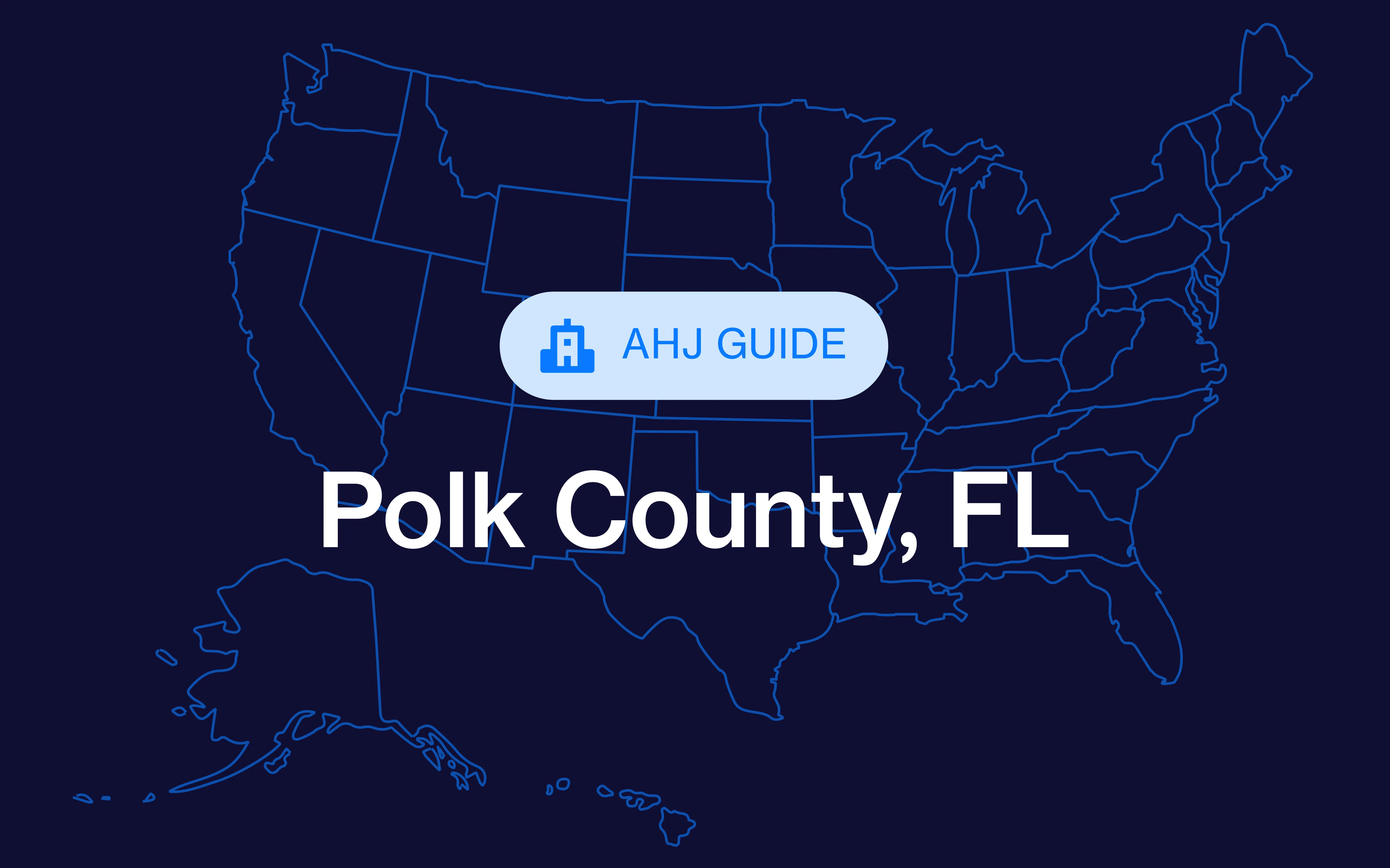In an industry where timelines are tight, costs keep climbing, and compliance is non-negotiable, construction technology has become the backbone of competitive building. For builders managing multi-site operations, developers coordinating across jurisdictions, and contractors juggling limited crews, digital tools offer a smarter path forward.
Construction technology refers to the software, systems, and digital solutions that streamline every stage of the building process — from planning and permitting to scheduling and field reporting.
In this guide, we’re covering the latest construction technology examples, exploring emerging trends, and showing how these tools can help teams of all sizes boost efficiency, reduce risk, and deliver better outcomes.
Simplify permitting with PermitFlow. Learn how.
What is construction technology?
Construction technology encompasses the tools and innovations that make the construction lifecycle more efficient. Processes like pre-construction planning, on-site execution, and post-construction reporting can all be streamlined using construction technology.
Examples of this kind of tech include:
- Cloud-based software
- Mobile apps
- Remote sensors
- Robotics
- Analytical tools
Historically, the construction industry has relied heavily on paper plans, clipboards, and manual processes. But today’s projects require more visibility, speed, and control — especially with teams often spread across multiple job sites, offices, and jurisdictions.
That’s where construction technology comes in. From drones and safety wearables to centralized dashboards and permit tracking software, these tools close the gaps, helping to automate workflows, sync teams, and replace scattered paperwork with structured data.
Examples of construction technology in use today
Builders today have a plethora of options to choose from in a growing ecosystem of digital tools. Below, we list some of the most widely adopted technologies that are transforming the construction landscape:
1. Project management software
Construction project management software, such as Procore, allows teams to schedule tasks, manage budgets, track RFIs and submittals, and centralize communication across stakeholders.
These tools often integrate with other essential systems, like permitting software and accounting software, and offer mobile apps for field crews so they can access information on the go.
2. Permit management software
The best permit management software simplifies regulatory compliance by tracking requirements, deadlines, and jurisdiction-specific rules in one place. It automates both the submission and approval process, cutting down on delays and reducing manual effort.
Permitting software can:
- Flag incomplete applications
- Monitor expiration dates
- Keep stakeholders aligned through centralized communication
- Provide jurisdiction-specific guidelines and documentation requirements
- Trigger alerts for delayed approvals or upcoming deadlines
3. Building information modeling (BIM)
BIM tools provide intelligent 3D building modeling, allowing multiple teams — such as architects, engineers, and contractors — to collaborate and identify design conflicts before construction even starts. BIM also supports prefabrication and green building compliance.
4. Field data collection tools
Mobile apps make it easy for contractors to log punch list items, safety incidents, jobsite photos, and progress updates — right from the field. Everything syncs instantly to a centralized system, so there’s no confusion about which version is the most up to date. These tools help eliminate miscommunication, speed up reporting, and keep both office and field teams on the same page.
5. Drones and site monitoring tech
Drones provide aerial imagery for surveying, progress tracking, and safety audits. Combined with photogrammetry software, these tools can deliver precise job site analytics without time-consuming manual inspections.
6. Safety wearables and sensors
Internet of Things (IoT) enabled gear can track worker movement, monitor fatigue, and alert teams in real time to hazards such as falls or proximity to heavy equipment. These types of devices help contractors proactively manage safety compliance.
Cross-industry applications of construction technology
Construction technology isn’t just for GCs. Today, a wide range of industries are using digital tools to cut red tape, reduce delays, and improve collaboration across complex projects.
Here’s how different teams are putting it to work:
- Municipal permitting agencies
- Many local governments are adopting cloud-based permitting systems that allow digital submittals, automated workflows, and faster review cycles. This helps to reduce backlogs, increases transparency, and simplifies access to public records.
- Infrastructure and utility companies
- Utilities use geographic information systems (GIS) that are integrated with construction platforms to track underground assets, coordinate multi-agency projects, and manage emergency response plans.
- Commercial real estate developers
- Developers rely on digital dashboards to manage dozens of concurrent projects, measure ROI, and produce investor reports. Tools like BIM and project analytics help to support more accurate forecasting and tenant coordination.
- Public sector construction
- High-visibility projects like schools or hospitals often require detailed documentation, public reporting, and strict regulatory compliance. These are all ideal use cases for centralized platforms that streamline communication and reporting.
How construction technology supports permitting for small teams
One of the most compelling aspects of construction technology is its ability to level the playing field for smaller contractors or leaner teams that lack a dedicated in-house office staff.
With an in-house permitting team
Construction businesses with internal permitting departments can use tech to automate routing, track multiple submittals, and manage jurisdiction-specific requirements. Tasks that once took days — like tracking permit expiration dates or responding to change requests — can now be done in real time with minimal manual intervention.
Without a permitting team
Smaller contractors who rely on permit expediters or handle the process themselves benefit greatly from permit automation. Permit management tools like PermitFlow can auto-fill forms, provide jurisdiction-specific guidelines, and trigger reminders for expiring or delayed permits.
Broader benefits for small teams
- Mobile project management apps keep the field and office in sync without constant phone calls.
- Scheduling software helps smaller crews better manage labor across multiple job sites.
- AI assistants can auto-generate reports, organize jobsite photos, and summarize inspection notes.
Ultimately, construction technology empowers small firms to operate with the speed, accuracy, and professionalism of much larger organizations without the overhead cost.
Benefits of construction technology
From lean local crews to national development firms, builders who embrace digital tools gain more than just efficiency — they gain a competitive edge.
Benefits of construction technology include:
- Faster project delivery: Automating scheduling, approvals, and reporting eliminates bottlenecks.
- Greater accuracy: Reduce costly errors with real-time data entry and centralized documentation.
- Stronger collaboration: Keep architects, engineers, field crews, and clients aligned all in one system.
- Improved client transparency: Provide clients with access to progress dashboards and milestone updates.
- Reduced rework: BIM and digital inspections identify issues early, saving time and money.
Beyond efficiency, construction technology helps to improve the ability to scale operations, make more competitive bids to clients, and build a strong and consistent reputation.
Construction technology trends
As tech adoption accelerates across the industry, several key trends are redefining how projects are planned, managed, and delivered:
Cloud-based platforms
The days of clunky desktop software are nearly gone. Cloud-based tools give builders and project managers access to plans, permits, and schedules from anywhere, whether you’re at the office, on-site, or in a client meeting.
Why it matters:
- Real-time updates mean no more working from outdated files
- Automatic software improvements without costly installs
- Secure access for everyone who needs it (and no one who doesn’t)
- Easy scaling as your team and project load grow
AI and machine learning
AI is helping teams make smarter decisions by analyzing past project data to flag potential delays, budget overruns, or safety risks. Some platforms even use generative design to suggest the most cost-effective layouts based on your site and constraints.
Why it matters:
- Fewer surprises during the build
- Smarter planning from day one
- Optimized designs that save time and money
Integrated systems
Disconnected tools slow everything down. These days, construction tools are becoming increasingly connected.
API integrations allow permit management platforms, scheduling tools, and accounting systems to share data, which eliminates silos and streamlines workflows across the board.
Why it matters:
- No more double entry or manual syncing
- Fewer mistakes caused by outdated info
- Everyone works from the same source of truth
Remote collaboration tools
Construction teams don’t need to be on-site together every day to stay aligned. Video walkthroughs, live chat, and real-time markups on digital drawings keep crews, subs, and clients on the same page — without the travel.
Why it matters:
- Faster decision-making when changes are needed
- Less downtime waiting for approvals
- More flexibility for teams spread across multiple sites
Modular and prefabrication support
Prefabrication isn’t new, but the tech behind it is better than ever. Digital construction platforms make it easy to design, track, and deliver prefab components so they fit seamlessly on-site.
Why it matters:
- Reduced on-site labor costs
- More predictable schedules
- Higher build precision with less rework
Data-driven decision making
Job site data is finally being put to work. Instead of sitting siloed in spreadsheets or paper reports, it’s being used to improve bidding accuracy, enhance vendor selection, and even pinpoint which construction methods are most efficient.
Why it matters:
- Better decisions backed by hard numbers
- Fewer budget misses
- Continuous improvement across projects
Sustainability tech
Sustainable building has moved from a nice-to-have to a must-have. Software now helps track carbon emissions, verify LEED compliance, and even compare materials based on both cost and environmental impact.
Why it matters:
- Stay ahead of regulatory requirements
- Win bids that require sustainability commitments
- Reduce long-term operating costs for clients
What to consider before implementing construction technology
While the benefits are clear, adopting construction technology requires careful planning. Below we list some common challenges that can occur with adopting new technology and a few tips for a smoother transition.
Common challenges:
- Upfront costs: Initial licensing fees or hardware investments can be an expensive cost up front.
- Training requirements: It takes time for employees and other staff to learn how to use new systems.
- Integration complexity: Some tools don’t sync with existing platforms.
- Employee cultural resistance: Long-time employees may resist a change in legacy processes.
Strategies for a smoother transition:
- Start small: Always begin with a pilot program on one project and with a small team. This can help to iron out any kinks before broadly applying changes to the rest of your organization.
- Get feedback early: Your pilot program is your test subject! Always get feedback from folks who are using the new software and refine processes before rollout.
- Look for strong support: Choose software with modular pricing and strong support teams that can help you with change management. That way you’ll have a dedicated point person to assist with implementation.
- Appoint champions on your team: A good way to ease adoption throughout your team is to appoint a couple of team members to help share wins within your team.
Embrace the future of construction
In construction, speed and precision are everything. The right technology helps you keep jobs moving by cutting down permitting delays, keeping everyone on the same page, and turning project data into clear next steps.
For everyone from large-scale developers to lean contracting crews, construction technology removes friction, reduces risk, and creates room for real growth. The builders who embrace technology are driving projects forward faster, safer, and with stronger margins.
Permitting is one of the biggest drains on your time. Streamline the process with PermitFlow — chat with us today to learn more.








